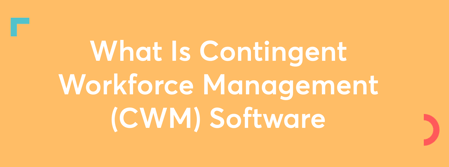Rethinking Interdepartmental Communication
- 23 Mar 2021
- 2 mins read
- Posted in
What does end-to-end truly mean?
In recent years, many industries have popularized and in many ways overused the term “end-to-end” when describing their software solutions. But what exactly is an end-to-end solution? By definition, it means in a row with the furthest point of one object touching that of another object. In this case, you would replace the word “object” with “business department.” Interestingly enough, while most businesses search for end-to-end software solutions, they do so without involving all departments that would benefit from the tool in initial discussions.
As a sales professional, I often ask myself, why is this? How can the Operations department head effectively speak for the finance department’s real pains? The answer is, in most cases, even if they tried, they cannot. Because they simply don’t know what inefficiencies the Head of Finance faces.
Despite this, most businesses establish a culture of making purchases for their independent pain points without taking the time to communicate effectively internally in order to understand the real root of the problem. It often means that they also fail to leverage the particular solution across all areas where there is scope for significant improvement. From a salesperson’s perspective, most professionals lean on their ability to sell to whichever department they gain interest from first, and fail to take the appropriate steps to uncover the different areas of the business their solution could improve; why? Because time is of the essence and their interest typically lies in closing the deal quickly and efficiently.
Are your teams speaking to each other?
Often, when initial conversations do involve heads of multiple departments, it becomes apparent that this is the first time they are all engaged in in-depth discussions about the topic at hand. Take a situation where the HR department is having difficulty finding and retaining freelance talent. During conversations, when asked about the finance department and how they make payments, they might respond with something like, “we have software in place for making payments, and we are happy with it.” This response, however, isn’t enough to stop a good sales professional from pushing for a meeting with the Head of Finance. As experts of company issues usually associated with a need for freelancer management systems, we can foresee that there could be some factors to explore on the payments side, which directly impact a company’s ability to attract and retain freelance talent. For example, a US-based company that only accepts freelancers domestically due to limitations on the payments side is restricting their HR team’s ability to source top talent on a global scale, for no valid reason other than the fact that they “have always had this process in place.”
So, where do we go from here? The answers start with both the buyers and sellers. We have to stop viewing pain points as isolated issues and start analyzing one department’s pains as potentially a company-wide problem. We also have to refrain from the notion of “if it ain’t broke, don’t fix it.” You don’t want to be in the position that it has broken, and it’s too late to fix it.
"Excellent firms don't believe in excellence - only in constant improvement and constant change." - Tom Peters
Our suggestion? When exploring an end-to-end solution, have the internal conversations first, or choose potential partners who offer a more holistic and consultative approach to selling. At TalentDesk, we understand the impact our solution has on each of the three departments with whom we typically work; HR, Operations, and Finance. We also understand our responsibility of taking the time to coach our customers on maximizing the impact of our platform to improve interdepartmental visibility and communication.
In essence, any solution should only be considered end-to-end if its users are also committed to functioning as one end-to-end entity through effective communication, demonstrated understanding, and collaboration.

Omari Hunt
Speak to us to find out how we can help you pay your contractors more efficiently
Related articles
What is a Vendor Management System (VMS)? A Complete Guide
What is a Vendor Management System (VMS)? A Complete Guide
Discover what a Vendor Management System (VMS) is and why it’s essential for managing your workforce. Streamline vendor management with ease.
Best Contractor Management Software for 2025
Best Contractor Management Software for 2025
Discover the best contractor management software to streamline workflows, ensure compliance, and simplify payments. Manage global contractors with ease.

Mastering Influencer Management: Strategies for Effective Collaboration
Our guide to influencer management, exploring strategies, tools, and tips to create successful influencer relationships and enhance your marketing impact.

10 Reasons Why You Don’t Need a Contractor Management System
Discover 10 hilarious reasons why you absolutely don’t need a contractor management system - because who needs efficiency, happy freelancers, or sleep?

What Is Contingent Workforce Management Software?
Discover how contingent workforce management software enhances cost savings & access to talent. Learn about essential tools, compliance & best practices.

Deel vs. the Competition: Discover the Best HR Software Alternatives
Discover the best Deel alternatives for global HR management. Compare features, pricing, and reviews to find the best solution for your global workforce.
The Ultimate Guide to External Game Development
The Ultimate Guide to External Video Game Development
Explore our ultimate guide on external game development, covering crucial strategies, tools, and tips to manage freelance developers efficiently.

What is a 1099 employee?
This is a complete guide on 1099 employees. Learn how to classify your workers, improve finances, boost employee morale, and enhance your reputation.

6 Reasons Why You Should Hire a Freelance Social Media Manager
This is a guide on the benefits of hiring a social media manager. Learn how to save time and enhance your social media reputation from expert insights.
Scalable Workforce Solutions for Digital Marketing Agencies
Scalable Workforce Solutions for Digital Marketing Agencies
For marketing agencies, levels of work can vary significantly. How do you scale your team to meet client needs while avoiding overcapacity at other times?
